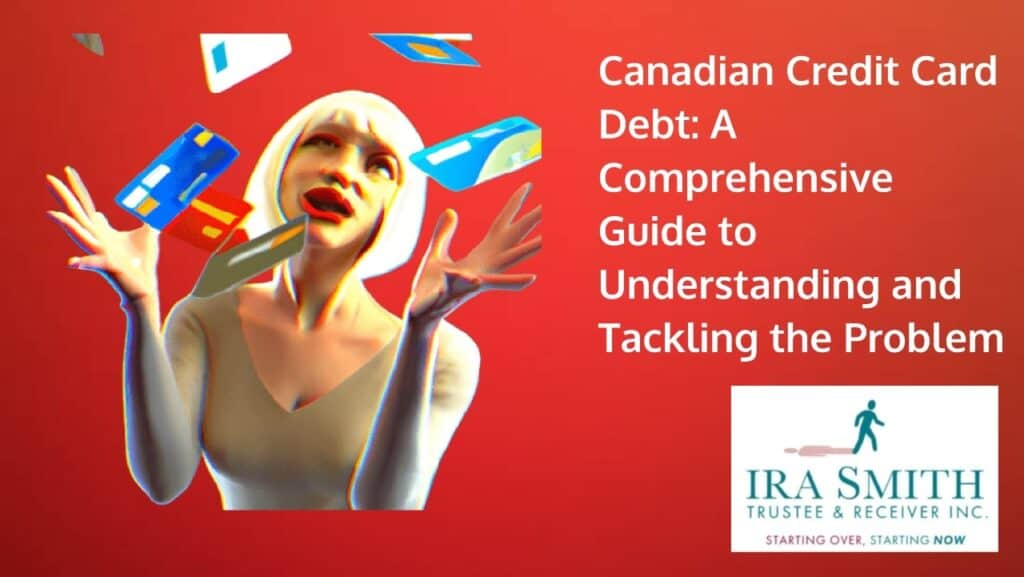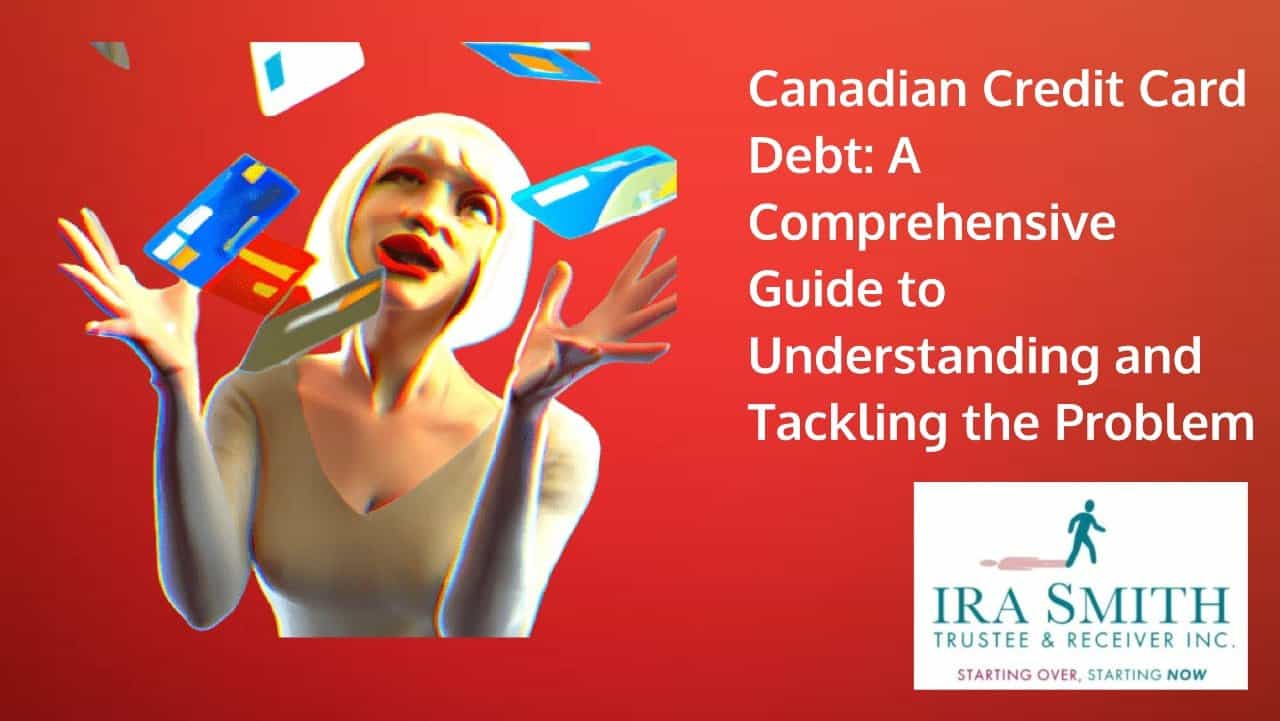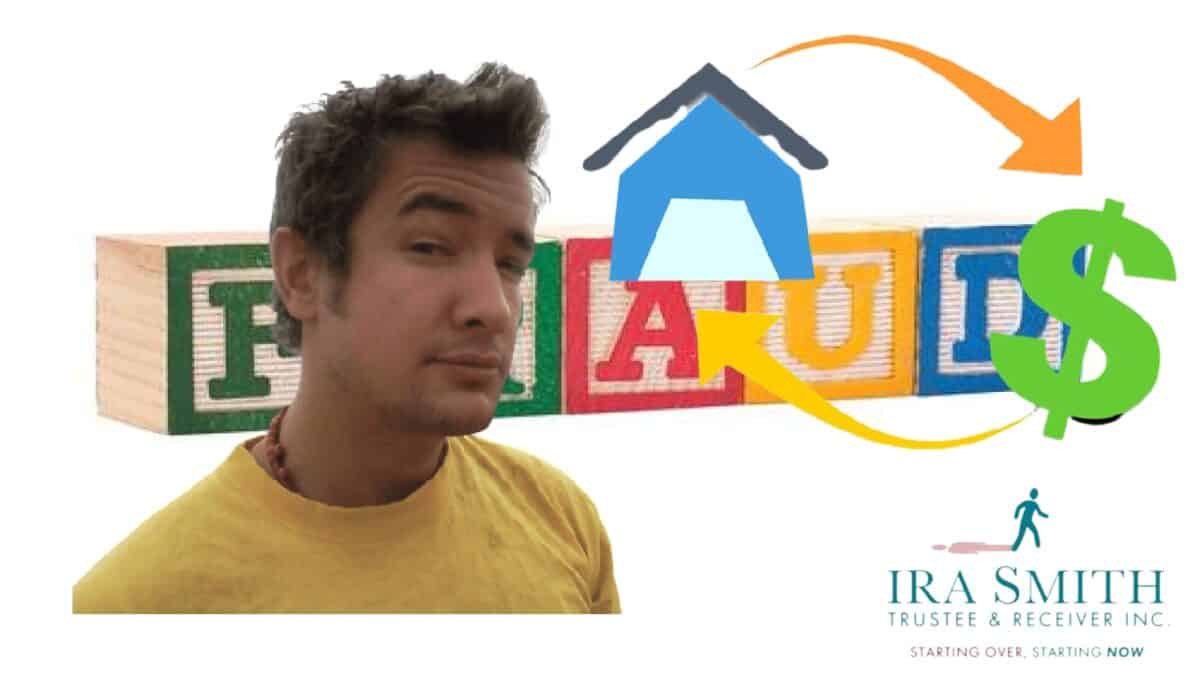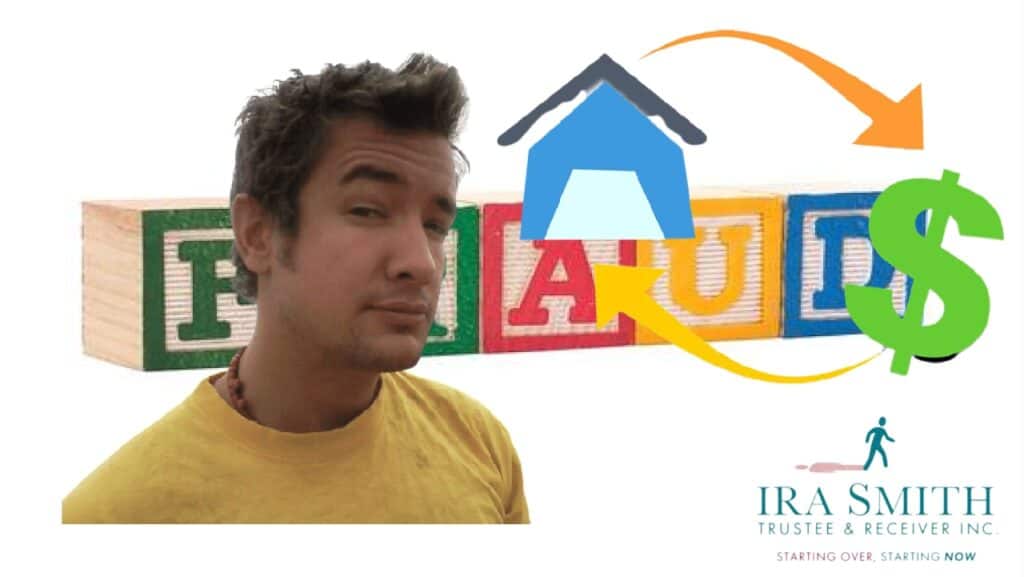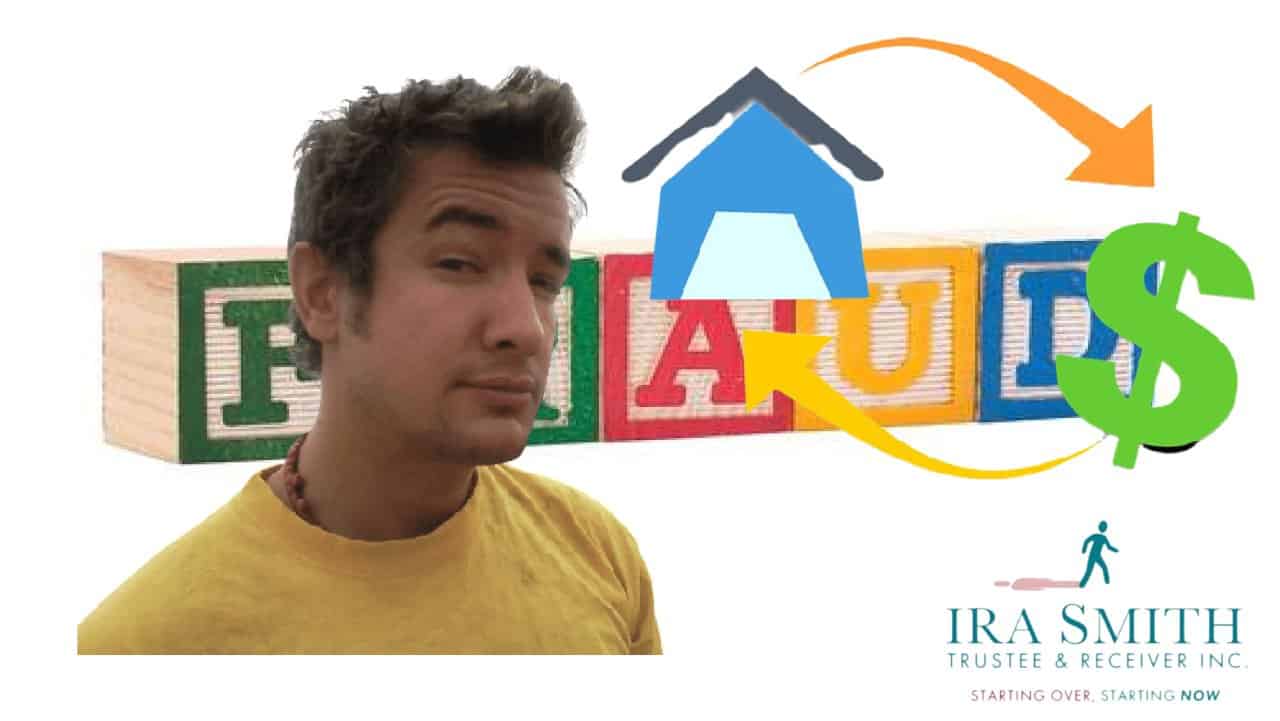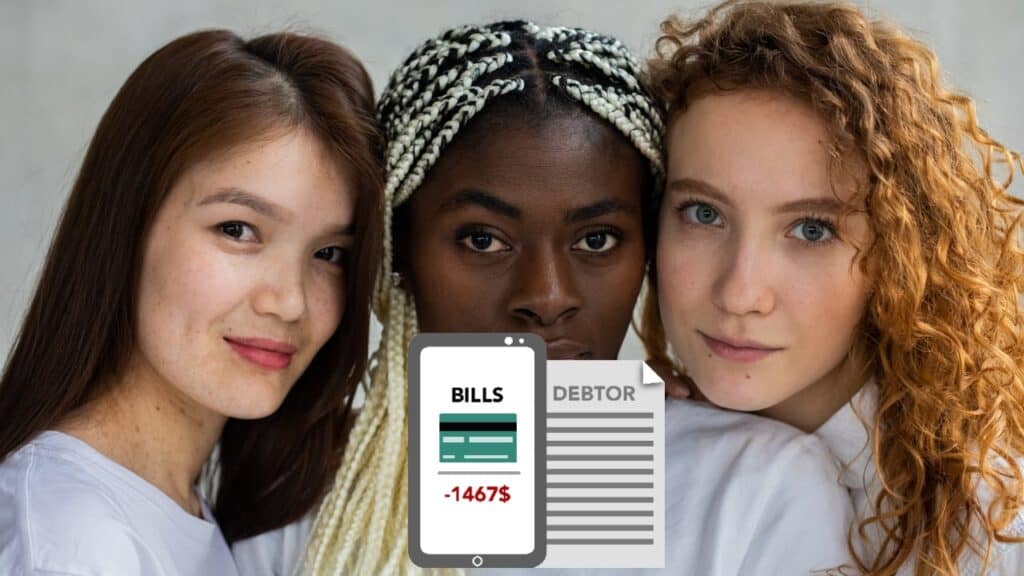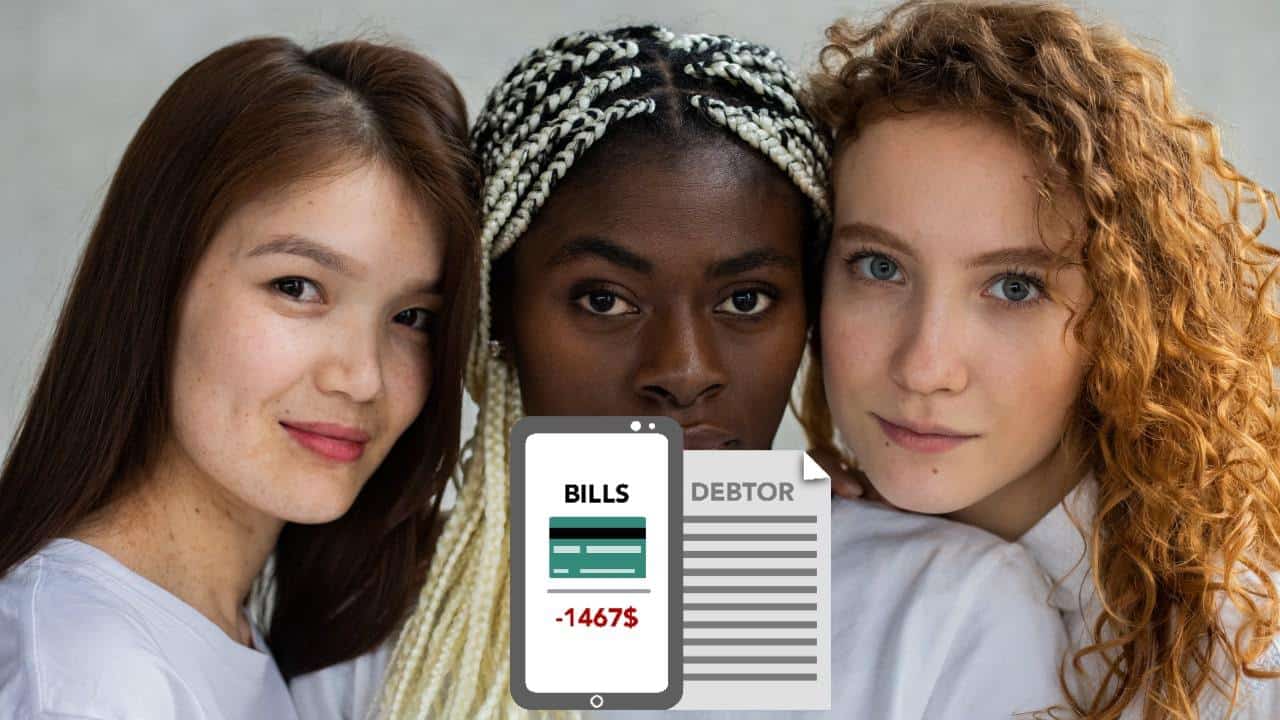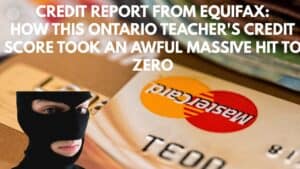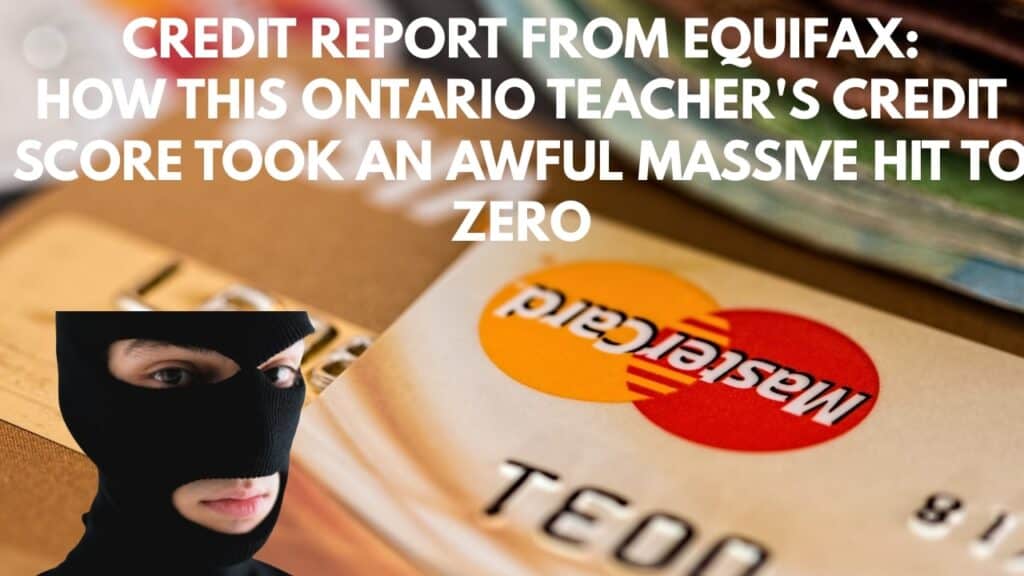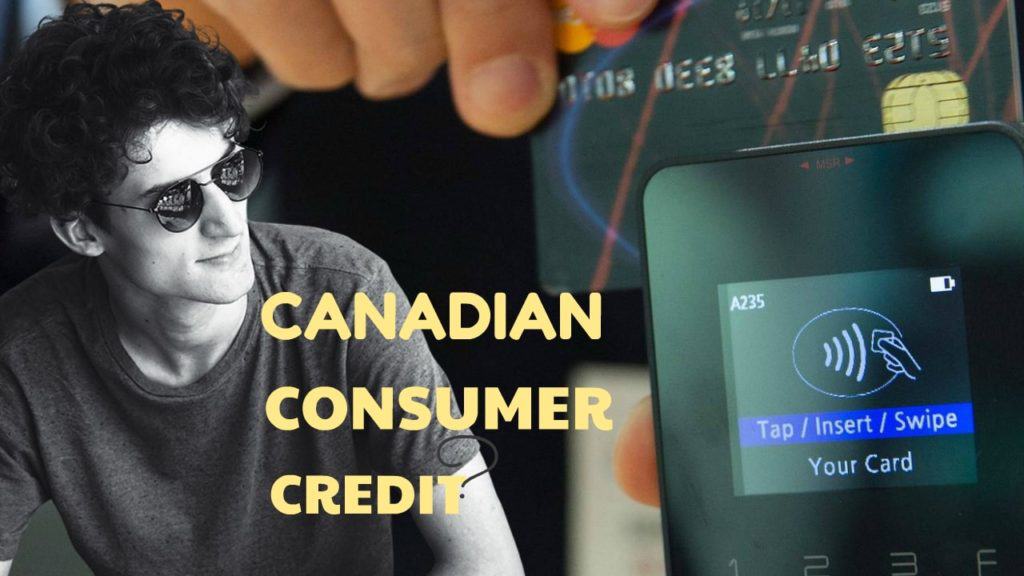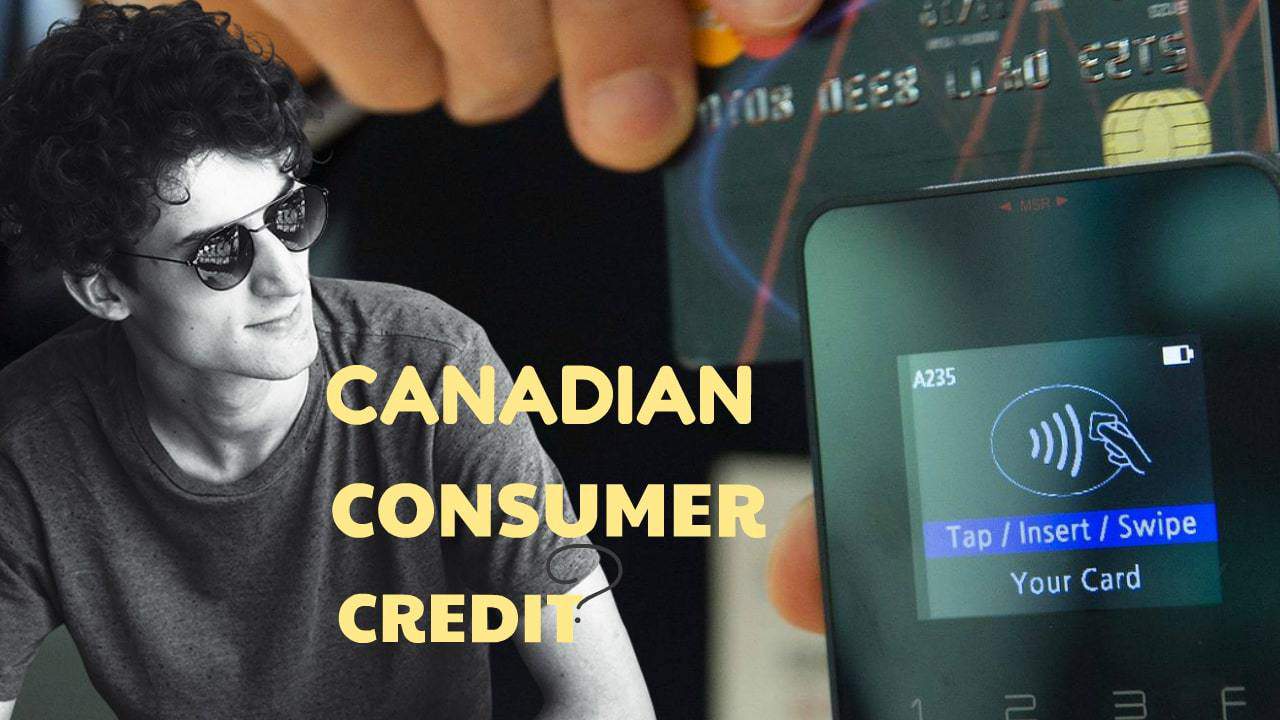Our mission includes helping you know how to increase credit score with our free online course
The objective of this Brandon’s Blog is to furnish readers with comprehensive insights on improving their credit rating, alongside introducing them to our complimentary no-cost e-learning module, “How to Increase Credit Score: How To Improve Your Canadian Credit Score”. This user-friendly course provides a definitive guide on increasing your credit score, thereby paving the way for better financial prospects. The brief video above describes the course and how you can access it.
This Brandon’s Blog provides highlights common problems faced by those with low credit scores, including being declined for credit or having to pay high-interest rates. I also provide valuable tips on how to increase credit score. The focus is primarily on the significance of maintaining a good credit score in order to get approval for reasonably priced loans, mortgages, or credit cards.
Explanation of maxed-out credit: Know how to increase credit score
Maxed-out credit happens when an individual has reached their credit limit and is unable to borrow any more and make further purchases. It results in high-interest rates, missed payments, and damaged credit scores. However, there are effective ways to increase your credit score and eliminate debt. This Brandon’s Blog, combined with our free e-learning course, delivers easy-to-understand strategies and expert counsel to equip consumers with everything they need to know to improve their credit scores to unlock better financial prospects.
Through the knowledge I am sharing, individuals can successfully navigate the complex world of credit ratings and experience marked improvements in their daily lives. By embracing sound fiscal practices, one can effectively manage their money, avoid bankruptcies or consumer proposals, and ultimately earn a more favourable financial life. So take control of your financial situation today and with our help, begin your journey towards a more stable and prosperous financial future with our “How to Increase Credit Score: How To Improve Your Canadian Credit Score”.

Importance of improving credit score: Know how to increase credit score
In today’s world, a good credit score functions as the cornerstone for getting financial freedom. For people that have grappled with debt, insolvency, bankruptcy or consumer proposals, improving their credit rating may look like an overwhelming obstacle. Yet, with the specific devices and insights we are supplying to you, any person will be able to take control of their very own financial life heading in the direction of a brighter tomorrow.
This is exactly why we have created “How to Increase Credit Score: How To Improve Your Canadian Credit Score“. Our recommendations and our tried-and-tested techniques will move you toward a better credit score, eventually unlocking excellent loan and mortgage opportunities from Canadian lenders, and enabling you to accomplish your financial goals. Take control of your future and bid farewell to higher interest rates and declined credit applications by going through our “How to Increase Credit Score: How To Improve Your Canadian Credit Score” today.
Description of what a credit score is, how it is determined and then how to increase credit score
A person’s credit worthiness is represented by a numerical score known as the credit score. This score is derived from various financial information such as payment history, credit utilization rates, length of credit history, types of credit used, and new credit inquiries.
Credit scores range from 300 to 900, where a higher score is indicative of better credit history and financial stability. The credit report, maintained by Canada’s two credit reporting agencies, Equifax Canada and TransUnion Canada (Equifax/TransUnion), is the source of credit ratings and it is what the Canadian banks will look at.

Importance of knowing your credit score and how to increase credit score
Maintaining a good credit score is a key factor in today’s financial landscape, irrespective of whether you are a student, a young professional, a business owner or are retired. Knowing your credit score is important so that you can stay informed on what others think of your creditworthiness and financial standing. Sometimes adverse information may find its way into your credit report as an error. By knowing what your credit report says, you will be able to prove any errors that should be eliminated which produces a lower credit score than what you are entitled to. It is important to have any errors fixed to avoid any negative impact on any assessment of your creditworthiness.
A low credit score can lead to being denied for credit, higher interest rates, and unfavourable loan terms from Canadian lenders. It is essential to maintain a high credit score as it paves the way for obtaining the best possible deals on loans and credit card products from financial institutions at the most favourable rates. Therefore, it is crucial to keep a tab on the various financial factors that contribute to your credit score to ensure a sound financial standing.
That is why we developed our complimentary no-cost e-learning module, “How to Increase Credit Score: How To Improve Your Canadian Credit Score”. To teach you how to improve your credit score.
Knowing how to obtain your free credit report is the 1st step in how to increase credit score
Maintaining vigilance over your credit report is a prudent method for verifying the precision of your credit history and score, both of which serve as significant benchmarks of your monetary stability. Fortunately, procuring a complimentary credit report has become effortless. It is your lawful right to receive an annual free credit report from each of the two Canadian credit bureaus.
Submit a formal request for your credit report via their digital portal or through the Canadian postal service. When you get it, meticulously examine it to identify any inconsistencies or inaccuracies that may be impeding your creditworthiness.
If you find yourself struggling with debt, don’t despair. Our complimentary e-learning module, “How to Increase Credit Score: How To Improve Your Canadian Credit Score” can provide you with valuable insights and practical strategies to enhance your credit score and overcome financial setbacks. You can trust us to help you take control of your financial future today.

Common credit score issues that create lower credit scores: How to increase credit score
A low credit score can present significant obstacles, particularly when making significant purchases on credit or seeking loans. Although there are many parts contributing to an individual’s credit score, certain concerns are regularly associated with reduced scores.
A number of widespread credit score difficulties can bring about lower scores, such as:
- Late payments: Not making your payments on time will have a major negative impact on your credit score, whether we are talking about credit cards, loans or lines of credit. Late payments reflect badly on your credit report and can significantly affect your overall score. Paying your debts on time, and not just your minimum payment, has a positive impact on your credit rating.
- High credit utilization: A higher credit utilization rate will adversely impact your credit score. Financial institutions prioritize borrowers who exhibit responsible credit management practices; hence, maintaining a low credit utilization ratio (usually below 30%) is fundamental.
- Errors on your credit bureau report: As already stated, inaccuracies on a credit report, ranging from erroneous personal details to accounts that are not legitimately attributable, can harm your credit rating. To safeguard against such potential pitfalls, it is imperative to maintain an annual review of your credit report and promptly challenge, with evidence, any inaccuracies that may be encountered.
- Defaulting on a loan: Be it a mortgage or an automobile loan, defaulting will lead to a deterioration in your creditworthiness. Therefore, you have to make sure when you are approved for a loan that you can afford the monthly payments and meet all other repayment terms. This is of prime importance.
- Applying for too much credit: Requesting too much credit can have negative effects on your credit rating. Potential lenders, and especially credit card companies, may interpret this as a sign of your nervousness over your financial hardship and a greater chance of you eventually defaulting on the loan. As such, you should exercise moderation when applying for credit. Moderation and realism is the key to maintaining a healthy credit profile.
- Accounts in collection: Having accounts in collection leads to a decrease in your credit score. This is because you have now shown that you cannot handle credit responsibly. It is imperative that you promptly settle any outstanding amounts and work with the creditor or its appointed collection agency to eliminate that account from your credit report. If you don’t, there will be a negative impact on your creditworthiness.
- “Hard credit check” versus “soft credit checks”: See the next section for this discussion.
By steering clear of these typical credit score complications, you can keep a good credit score and heighten the probability of obtaining credit approval in the foreseeable future.
“Hard hits” versus “soft hits”: Know how to increase credit score
The first issue is having too many hard inquiries on your credit report. These hard inquiries occur when lenders pull your credit report and do a credit score check as the first step in determining if you’re going to be approved for a loan or other credit product you applied for.
What are hard inquiries on your credit report?
When seeking new credit such as a loan, credit card or mortgage, hard inquiries are initiated on your credit report. A hard inquiry is a request for a copy of your credit report and it remains on your credit report for two years. However, it only affects your credit score for one year.
What are soft inquiries on your credit report?
A soft inquiry is an informational check of your credit that does not impact your credit score. Soft inquiries appear when you or an authorized user view your own credit report, or when a business checks your credit for pre-approved offers or account reviews.
Soft inquiries are also known as “soft pulls” because they do not impact your score, unlike hard inquiries which do.

13 tips on how to address these issues and how to increase credit score in Canada
We understand that managing finances can be challenging, especially when you are maxed out on your credit and can’t repay the debt. You may be feeling overwhelmed and unsure of what to do next, but don’t worry, we are here to help.
Developing sound credit practices is the cornerstone of financial literacy. Learning and regularly practicing such practices is crucial as it will improve your financial outlook. By timely payment of bills, responsible use of credit cards, and staying on top of what is in your credit report, you can improve your credit score and secure a path to financial triumph.
This, in turn, can enable you to establish a robust credit history, thereby qualifying you for lower interest rates on all credit products. Sticking with the sound tips indicated below, it will grant you access to more advantageous lending options that may not be easily available to the masses.
Developing sound credit practices means unfailing commitment, meticulous planning, and unwavering attention to detail. However, you will reap the benefits because these tips and activities will help you achieve your long-term financial goals and establish a solid foundation for your and your family’s financial future.
Here are our 13 tips on how to address these issues and how to increase credit score in Canada:
Assessing your debt situation
You have to start by truthfully analyzing your whole financial status to successfully manage your financial debt. This involves meticulously gathering all the information from charge card statements, and loan agreements, and identifying all other outstanding debts to calculate the total amount owed, the individual interest rates you are being charged by product, and all your monthly payments. Only by doing so, can you after that begin to create a realistic plan to pay off your financial debts in a timely and efficient way.
Creating a budget plan
Now that you have collected all of your debt information, it’s time to develop a household budget that includes all incomes as well as expenses. Ensure you include all of your fixed expenditures like rent or mortgage payments, utilities and vehicle loan payments. Then you need to list all of your variable costs like food and entertainment.
Once you have a clear idea of your expenditures, compute your income on a monthly basis and subtract your expenses from it. This will show you where you need to cut down on expenses and/or take on a side gig to raise your income.
Keep in mind that you cannot be spending more than you earn in any month. Ideally, you want to spend less each month than your monthly income, so that you can then have money to dedicate to paying down your debts and building up an emergency savings fund.
Incidentally, do not neglect to include the income tax you need to pay on your income, broken down into a regular monthly cost. Include that amount as a monthly expense also.
Contacting your creditors
It’s crucial to reach out to your creditors promptly if you’re having trouble keeping up with your debt payments. You might find that they’re receptive to collaborating with you on a customized repayment scheme that meets your financial capabilities. By disregarding your debts, you’ll only exacerbate the problem, which could lead to late charges, sanctions, and a negative impact on your credit report.
Please keep in mind that unless you have first done the two steps listed above, you will not have a good understanding of what kind of accommodation you need to ask each creditor for. If you go in well-prepared knowing all of your numbers, you will significantly increase your chances of success in these negotiations.
Explore debt consolidation
If you’re dealing with numerous debts, you could want to take into consideration debt loan consolidation. It’s a viable option where you can secure a single loan at a lower rate of interest than the weighted average interest rate from every one of your debts that you’re currently paying.
You then use the funds from this new loan to fully pay off or otherwise settle all your other debts. As a result, you will then only have one debt to concentrate on, with a reduced month-to-month repayment. This will certainly assist you handle your debts successfully and reduce the amount of interest you’re paying. This also saves you cash that you can then put toward building up your emergency fund and savings.
Reduce credit utilization
Decreasing credit utilization is an essential part of increasing your credit score. Firstly, take stock of your existing credit usage, and attempt to pay off the balances on the highest-interest accounts first. Think about settling your debts with a debt consolidation loan or a zero-percent balance transfer credit card. You can enjoy a healthy financial future by reducing your credit card balances and limiting how many times you apply for credit within a year. Enhance your credit score by lowering your credit utilization ratio.
Pay your bills on time
Always paying your bills on time is key to maintaining your credit rating in good shape. A constant history of timely repayments will help you build a higher credit score and which improves the look of your credit report. It is critical to keep your bills paid on time to show a positive payment history and not have a damaging influence on your credit history.
Use Your Credit Responsibly
Avoid maxing out your charge cards and try to keep your credit utilization rate low as previously stated. It will help you keep a great credit rating or improve your existing one by showing lenders that you are a responsible borrower.
Monitor Your Credit Report
Maintaining an accurate credit report and safeguarding against identity theft are critical financial practices. You are legally entitled to get from the Canadian credit reporting bureaus a complimentary copy of your credit report annually.
Thoroughly review it so that you can detect any fraudulent activities or errors that could result in severe damage to your credit rating. Hopefully, there are not, but you must remain alert and well-informed about your credit standing to ensure your financial well-being.
Limit New Credit Applications
It is important for you to remember that each credit application you make reduces your credit score. Therefore, you must be cautious and limit the number of credit applications you make. You should only try to get new credit when it is absolutely needed. This advice also goes for applying for a credit limit increase of an existing credit product.
Developing a Strong Credit Profile
Having no or very little credit history can pose a huge problem when you make a credit application. Your credit file does not have enough information in it to show that you can handle credit responsibly. It is recommended to begin developing a positive credit history early on in your adult life. You should consider alternatives such as getting a secured credit card account or a 1-year term personal loan that requires you to make regular monthly payments. If you make your payments on time, you will begin establishing an excellent credit track record which brings about a good credit score.
A word of caution. As you are just starting out, make sure that you only set reasonable loan or credit card limits so that you can afford the monthly payments to repay what you owe on the credit accounts during the period of time allowed by the lender.
Explore professional credit counselling
Individuals grappling with financial challenges may find it advantageous to seek the expertise of a seasoned credit counsellor. This prudent move can afford them a series of invaluable benefits, all of which serve to bolster their financial literacy and improve their overall monetary management. Prominent advantages of credit counselling include, but are not limited to:
- Enhanced Debt Management: Credit counselling can help individuals struggling with debt to manage their finances better. The counsellors can offer valuable advice on debt repayment strategies, budgeting, and managing the debt load effectively.
- Financial literacy: The acquisition of financial knowledge is essential for individuals to navigate the complexities of financial management with success. To this end, credit counsellors offer an imperative service by imparting essential financial education that equips individuals with the necessary skills to cultivate sound financial habits, make informed financial decisions, and preemptively avoid potential financial obstacles.
- Improved credit score: Credit counselling services can provide individuals with the valuable expertise necessary to improve their credit scores. People who go through credit counselling obtain the tools necessary to practice the habit of responsible financial management which over time improves their credit scores.
- Emotional Support: The credit counsellor can help people through the rough patches of anxiety and worry about their financial situation until they start feeling better about themselves and their improving financial situation.
Speak to a licensed insolvency trustee
There are benefits to having a no-cost consultation with a Canadian licensed insolvency trustee if you are facing financial difficulty. Here are a few:
- Expert advice
- Protection from creditors
- Debt relief
- Guidance through the process
- Financial education
Overall, speaking with a Canadian licensed insolvency trustee can help you take control of your finances and achieve a fresh start.
Watch the video at the top of this Brandon’s Blog
You will find out how to access our no-cost e-learning module, “How to Increase Credit Score: How To Improve Your Canadian Credit Score”.
Conclusion: How to increase credit score
Managing your debts can be challenging, but with the right plan in place, it’s possible to get back on track. Remember to assess your debt situation, create a budget plan, contact your creditors, explore debt consolidation, and consider bankruptcy only as a last resort option. With these steps, you can take control of your finances and work towards a debt-free future. Having a maxed-out credit can be stressful and overwhelming. However, it is also an opportunity to take control of your finances and work towards improving your credit score.
With our complimentary no-cost e-learning module, “How to Increase Credit Score: How To Improve Your Canadian Credit Score”, you can learn practical strategies and expert advice on how to boost your credit score and secure better financial opportunities. By following our simple steps, you can finally put an end to being denied credit or paying high-interest rates. With dedication and perseverance, you can unlock financial freedom and achieve your goals. So, don’t wait any longer; start your journey towards a healthier credit score today and join countless individuals who have already benefited from our guide.
I hope you enjoyed this how to increase credit score Brandon’s Blog.
Revenue and cash flow shortages are critical issues facing people, entrepreneurs and their companies and businesses. Are you now worried about just how you or your business are going to survive? Are you worried about what your fiduciary obligations are and not sure if the decisions you are about to make are the correct ones to avoid personal liability? Those concerns are obviously on your mind. Coming out of the pandemic, we are also now worried about the economic effects of inflation and a potential recession.
The Ira Smith Team understands these concerns. More significantly, we know the requirements of the business owner or the individual that has way too much financial debt. You are trying to manage these difficult financial problems and you are understandably anxious.
It is not your fault you can’t fix this problem on your own. The pandemic has thrown everyone a curveball. We have not been trained to deal with this. You have only been taught the old ways. The old ways do not work anymore. The Ira Smith Team makes use of new contemporary ways to get you out of your debt problems while avoiding bankruptcy proceedings. We can get you debt relief now.
We have helped many entrepreneurs and their insolvent companies who thought that consulting with a trustee and receiver meant their company would go bankrupt. On the contrary. We helped turn their companies around through financial restructuring.
We look at your whole circumstance and design a strategy that is as distinct as you are. We take the load off of your shoulders as part of the debt settlement strategy we will draft just for you.
The Ira Smith Trustee & Receiver Inc. team understands that people facing money problems require a lifeline. That is why we can establish a restructuring procedure for you and end the discomfort you feel.
Call us now for a no-cost consultation. We will listen to the unique issues facing you and provide you with practical and actionable ideas you can implement right away to end the pain points in your life, Starting Over, Starting Now.
CLICK THE PICTURE BELOW TO GET OUR COMPLIMENTARY NO-COST E-LEARNING MODULE, “HOW TO INCREASE CREDIT SCORE: HOW TO IMPROVE YOUR CANADIAN CREDIT SCORE”




